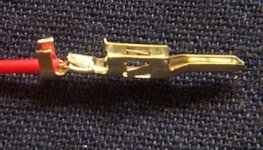CGameProgrammer
10 kW
Not sure which forum this should be in, but I have never been able to successfully crimp a single pin for a molex connector; it always gets bent so it doesn't fit in the housing, and at the same time it doesn't hold the wire firmly so it slides out of the pin very easily.
Does anyone here know of a foolproof reliable method for crimping them? Can you should what tools you use and exactly where and how you crimp the pin? I've already read many things online and know the theory (the outermost tabs hold the insulation, the inner one crimps onto the exposed wire).
Does anyone here know of a foolproof reliable method for crimping them? Can you should what tools you use and exactly where and how you crimp the pin? I've already read many things online and know the theory (the outermost tabs hold the insulation, the inner one crimps onto the exposed wire).








